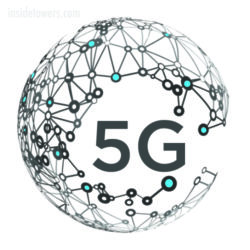The buildout of 5G in cities, specifically the dense small cell network needed to fulfill data needs, will create opportunities for pultruded composites, reported the JEC Group. Using composite materials made from fiber-reinforced plastic in urban infrastructure will offer lower 5G signal loss to deliver reliable in-building wireless service.
The European Technology Pultrusion Association, or EPTA, outlined how the rollout of 5G will create increased adoption of composite materials as smart cities are built.
By 2025, it’s estimated that the population in urban areas will increase by 70 percent with 5G services expected to be widely available. With countless small cells needed to transmit the high-frequency 24GHz spectrum to power 5G in highly populated areas, composite materials can become the answer for concealment and more.
One example is pultruded glass fiber composite profiles that are nearly ‘invisible’ to RF waves and have been used in telecommunications applications for many years. Pultrusion is ideal for high volume, cost-effective manufacturing of construction elements like simple flat panels, posts, tubes, and cylindrical antenna radomes and shrouds, to more complex custom-designed structures. These products are also easy to install, lightweight, and require little maintenance, reported the JEC Group.
The EPTA report also suggests using composite materials for connected light poles or ‘smart poles,’ that integrate energy-efficient LED lighting with space for 5G hardware and antennas plus can house various OEMs. While steel is currently the dominant material used to manufacture utility poles, there’s increasing worldwide adoption of pultruded composite poles. Benefits of pultruded poles include corrosion resistance, ease of installation and offering a longer service life with lower lifecycle costs.
Outfitting buildings with pultruded materials, including window frames and doors, beams, panels, and architectural facades can deliver improved in-building mmWave signal penetration together with excellent thermal insulation, per the EPTA report. One project already in the works to test 5G signal loss through composite versus traditional building materials is The LuxTurrim5G project on Smart City Digital Ecosystem Creation, driven by Nokia Bell Labs.
“Composite materials offer many properties that make them attractive construction materials for future cities, including high strength and stiffness, low weight, corrosion resistance, thermal insulation, and design freedom,” said Dr. Elmar Witten, Secretary of EPTA. “The need to ensure reliable 5G coverage in buildings and outside brings additional motivation for the integration of RF-transparent pultruded composites into urban design.“
September 6, 2019





Reader Interactions